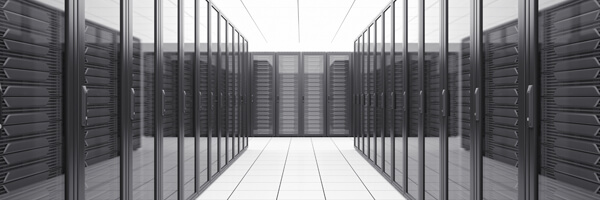
- Human error
- Hardware failure
- Disaster
More often than not, employees can accidentally (or intentionally) delete files or move files, complicating the restoration process. Similar to human error, hardware failures and disasters like fire and flooding are impossible to predict. A lightning strike causing a power surge can result in data loss even with surge protectors installed. It’s easy to think these events have a low possibility, but they happen more frequently than you might think. While it’s impossible to predict when these events will happen, it’s possible to anticipate them with a backup ready to go for data recovery. Your best defense is the 3-2-1 Rule.
1. Have at Least Three Copies of Important Data
Maintaining at least three copies — one primary and two backups — is a safe bet for your data. One backup simply isn’t enough. Think of it this way — let’s pretend that you have your data saved locally on a server. If that server has a known failure rate of 1/100, then that means every day you go to work, you have a 1/100 chance of that server not working and losing your data. In that case, you definitely want that data backed elsewhere. Let’s say you have that same data saved on a different server that’s not local, and this also has a 1/100 chance of failing. Now, you have a 1/10,000 chance of losing your data entirely. Add another copy that’s stored on a different server that shares the same probability of failure and your risk of losing data multiplies to a 1/1,000,000 chance — much better odds.
2. Store the Copies on Two Different Media Types
Varied media types for storage safeguards your data even further. Storing your data on different media types varies the risk of failure. Think about your how far back you’d need to go to recover your data and how quickly you’d need to recover that data when choosing the types. If your building burned down at 5 p.m. today, then how far back would your data recovery need to go, and how quickly would you need to have it restored? Whether it’s an internal hard disk drive or removable storage media such as USB drives, SD cards, CDs, DVDs, or perhaps floppy disks, consider what makes the most sense for your business.
3. Save One Backup Copy Offsite
Location plays a great role in keeping your data accessible as well. Keeping at least one backup copy in an entirely separate physical location lowers the risk of having a disaster destroy all of your data. If another physical location isn’t an option for your business, then consider cloud storage. If you have any questions or need assistance with backing up your data, please contact us to learn more.Recent News & Insights
Understanding Farm Income Averaging
Job Counteroffers: What You Gain & What You Risk
Maximizing Your Nebraska R&D Credit
What do buyers look for when purchasing a roofing business?




%20(1).jpg?width=300&height=175&name=Mega%20Menu%20Image%20(2)%20(1).jpg)
%20(1)-Mar-08-2024-09-27-14-7268-PM.jpg?width=300&height=175&name=Untitled%20design%20(6)%20(1)-Mar-08-2024-09-27-14-7268-PM.jpg)

%20(1)-Mar-08-2024-09-11-30-0067-PM.jpg?width=300&height=175&name=Untitled%20design%20(3)%20(1)-Mar-08-2024-09-11-30-0067-PM.jpg)
%20(1).jpg?width=300&height=175&name=Mega%20Menu%20Image%20(3)%20(1).jpg)
%20(1).jpg?width=300&height=175&name=Mega%20Menu%20Image%20(4)%20(1).jpg)
%20(1).jpg?width=300&height=175&name=Mega%20Menu%20Image%20(5)%20(1).jpg)
-Mar-08-2024-08-50-35-9527-PM.png?width=300&height=175&name=Untitled%20design%20(1)-Mar-08-2024-08-50-35-9527-PM.png)


.jpg)




